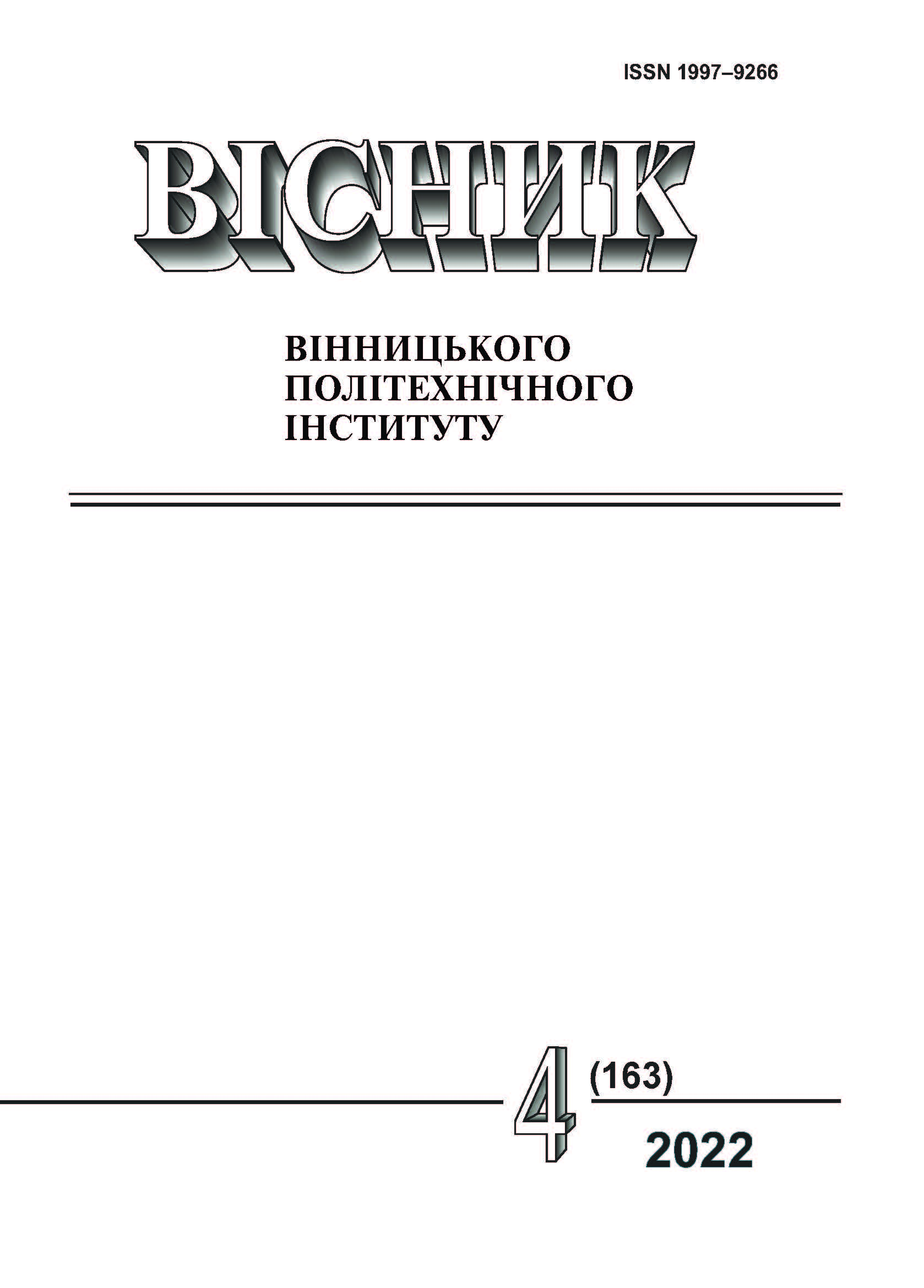Estimation of Hazardous Household Waste Streams in Ukraine
DOI:
https://doi.org/10.31649/1997-9266-2022-163-4-13-18Keywords:
household waste, hazardous household waste, waste generation, waste disposal, hazardous componentsAbstract
Although hazardous components present a small share of household waste, they are the most problematic fraction requiring special management methods due to their toxicity, and pose a significant danger to the environment and human. The most common hazardous household waste includes batteries, fluorescent lamps, detergents, paints, waste electrical and electronic equipment. In Ukraine, data on this waste generation are incomplete. Companies and organizations submit information on the generation of all waste categories to the State Statistics Service of Ukraine. Statistical data on the content of hazardous components in household waste are not available, their volume is estimated at 0.5…3 thousand tons/year. The data of the State Statistics Service of Ukraine were analyzed and the amount of waste generated in the commercial sector and classified as hazardous household waste was determined. There is a steady decrease in the amount of hazardous household waste generation — almost twice in last 4 years, with electrical appliances as most decreasing (6 times). At the same time, generation of some waste has increased: pesticides; edible oils and fats; contaminated packaging and filter materials and protective clothing; medical equipment and instruments; medical infectious waste. The largest share among hazardous components have used equipment and devices, batteries and accumulators, waste fertilizers, medical waste and edible oils and fats, fluorescent lamps and other mercury-containing waste. The share of hazardous household waste in Ukraine is estimated at 0.03…0.1 % or 0.24 kg/year per 1 person, or 0.13…0.26 % (up to 0.74 kg/year per 1 person) taking into account the commercial sector. This is an order of magnitude less than in other countries. This may indicate underestimated data due to the inefficiency of the waste accounting system and significantly higher real volume of hazardous household waste. The dynamics of hazardous household waste disposal is positive (an increase of 5 times in recent years), but it is achieved almost exclusively through the disposal of lead batteries, pharmaceuticals, medical infectious waste, medical devices and instruments.
References
D. Adamcová, M. D. Vaverková, B. Stejskal, and E. Břoušková, “Household solid waste composition focusing on hazardous waste,” Polish Journal of Environmental Studies, vol. 25(2), pp. 487-493, 2016.
V. Ishchenko, V. Pohrebennyk, R. Kochan, O. Mitryasova, and S. Zawislak, “Assessment of hazardous household waste generation in Eastern Europe,” in 19th International Multidisciplinary Scientific Geoconference SGEM 2019, vol. 19, issue 6.1, June 30 – July 6, 2019, pp. 559-566.
K. Yasuda, and M. Tanaka, “Report on hazardous household waste generation in Japan,” Waste management & research, no. 24(4), pp. 397-401, 2006.
S. Ojeda-Benítez, Q. Aguilar-Virgen, P. Taboada-González, and S. E. Cruz-Sotelo, “Household hazardous wastes as a potential source of pollution: a generation study,” Waste management & research, no. 31(12), pp. 1279-1284, 2013.
A. Gendebien, et. al., “Study on Hazardous Household Waste (HHW) with a Main Emphasis on Hazardous Household Chemicals (HHC),” Final Report, European Commission, Directorate General Environment. European Commission, Brussels, Belgium, 2002.
A. A. Manggali, and D. Susanna, “Current management of household hazardous waste (HHW) in the Asian region,” Reviews on environmental health, no. 34(4), pp. 415-426, 2019.
A. Terazono, M. Oguchi, S. Iino, and S. Mogi, “Battery collection in municipal waste management in Japan: Challenges for hazardous substance control and safety,” Waste Management, no. 39, pp. 246-257, 2015.
T. Nigl, et. al., “Characterisation and material flow analysis of end-of-life portable batteries and lithium-based batteries in different waste streams in Austria,” Waste Management & Research, no. 38(6), pp. 649-659, 2020.
V. Ishchenko, R. Petruk, and Y. Kozak, “Hazardous household waste management in Vinnytsia region,” Environmental Problems, vol. 1, pp. 27-30, 2016.
I. Pecorini, F. Baldi, D. Bacchi, E. A. Carnevale, and A. Corti, “Leaching behaviour of hazardous waste under the impact of different ambient conditions,” Waste Management, no. 63, pp. 96-106, 2017.
Міністерство захисту довкілля та природних ресурсів України, Національна доповідь про стан навколишнього природного середовища в Україні у 2020 році. [Електронний ресурс]. Режим доступу:
https://mepr.gov.ua/files/docs/Zvit/2022/Національна%20Доповідь%202020%20(2).pdf. Дата звернення: Трав. 2, 2022.
Державна служба статистики України, Утворення відходів за класифікаційними угрупованнями державного класифікатора відходів. Режим доступу: http://www.ukrstat.gov.ua/operativ/operativ2018/ns/uv_zaklass/arch_uv_zaklass_u.htm. Дата звернення: Трав. 2, 2022
Downloads
-
PDF (Українська)
Downloads: 154
Published
How to Cite
Issue
Section
License

This work is licensed under a Creative Commons Attribution 4.0 International License.
Authors who publish with this journal agree to the following terms:
- Authors retain copyright and grant the journal right of first publication.
- Authors are able to enter into separate, additional contractual arrangements for the non-exclusive distribution of the journal's published version of the work (e.g., post it to an institutional repository or publish it in a book), with an acknowledgment of its initial publication in this journal.
- Authors are permitted and encouraged to post their work online (e.g., in institutional repositories or on their website) prior to and during the submission process, as it can lead to productive exchanges, as well as earlier and greater citation of published work (See The Effect of Open Access).





